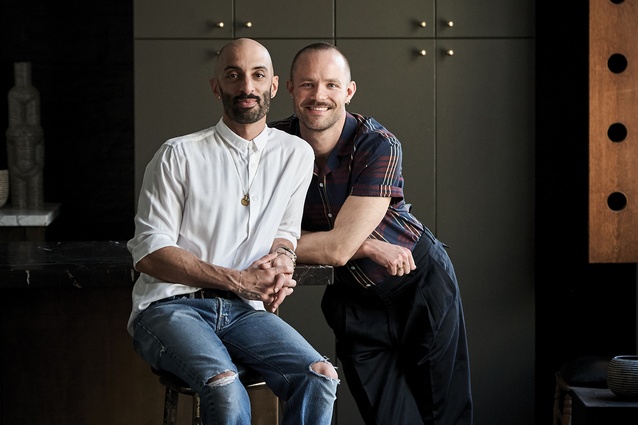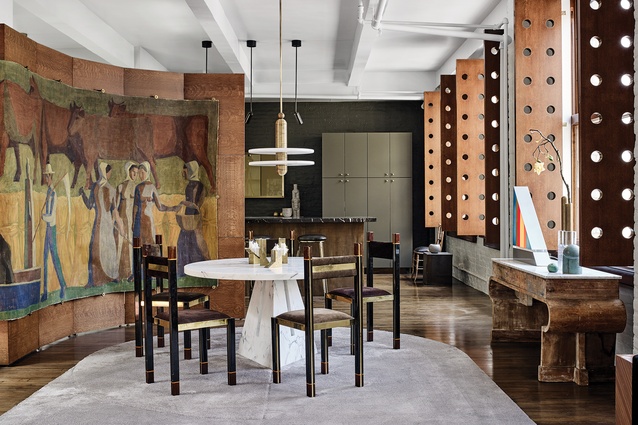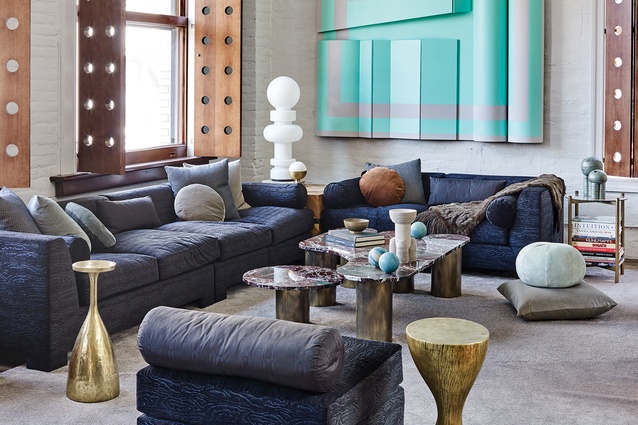Designer interview: Gabriel Hendifar
We speak to the co-founder of New York-based design studio Apparatus, Gabriel Hendifar, about how he and partner Jeremy Anderson came to set up the furniture and lighting studio eight years ago and the ways in which they have interwoven its luxury pieces within their Flatiron loft space.
You co-founded Apparatus with your partner, Jeremy Anderson. How did it all start?
Gabriel Hendifar (GH): I worked in womenswear for ten years in Los Angeles and Jeremy was working in PR when we met. Jeremy’s job moved us to New York and, surrounding the move, a lot of questions came up: What would the next chapter be like? What life did we want?
When we had moved in together in Los Angeles, we had created some pieces for our apartment – out of necessity in some ways but, more than anything, because we weren’t finding what we wanted out there in the world. It was really just through conversations and the support of some friends that we decided to take a leap and start Apparatus when we got our footing in New York.
What kind of pieces did you start off making?
GH: A lot of the early designs were inspired by jewellery, which I’ve always seen as ultimate objects of desire. Jewellery is still often a point of reference for me; I want to elicit that sense of longing with what we create.
Aside from what inspires you, how would you describe the Apparatus ethos?
GH: For me, the studio is still about creating what we want to see in the world and creating a world we want to live in.
Can you describe an average day at Apparatus?
GH: In many ways, there is no average day at Apparatus. I feel like each day takes on a kind of energy all its own. As creative director, my days are spent meeting with the various teams on each project we are currently working on. Right now, we’re deep in development for our next collection, so the days are packed with meetings and conversations as we put all the puzzle pieces together.
Jeremy has been developing his own body of ceramic work, so his days are dedicated to that. Working out of a space in the same building as the Apparatus studio, he’s still able to be a presence here.
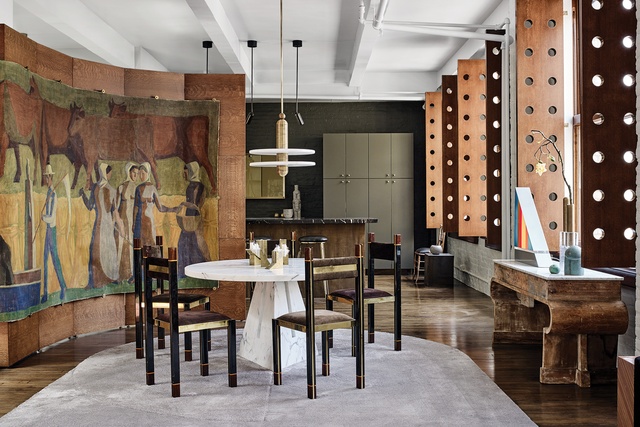
You moved to the Flatiron area of Manhattan a few years ago. What initially drew you to the apartment?
GH: It’s a pretty classic New York loft space, which is something that’s always intrigued us. It feels very ‘of the city’ and has an amazing view through great big windows. When we came in, it was a pretty blank slate. Some updates had been made over the years but it was essentially a big white box, which was an amazing thing to encounter. Previously we had been in Brooklyn in a brownstone and worked more within the existing architecture. Moving into a loft gave us an opportunity to create an experience and invent a new vocabulary for the space. We added a layer of lushness by building a floating wall that was wood panelled on one side and lacquered on the other, dividing the volume and creating a sense of unfolding as you move through the apartment.
As designers, you must be constantly thinking about what looks good and how people’s perceptions of materials and styles change. How did you decide what to do for your own living space?
GH: I think our space is guided, as the studio is, by what we want to see in the world. It’s all personal rather than a response to a trend or something people are expecting to see. It’s more about how it relates to a greater history and design narrative.
How did you decide what Apparatus pieces you would include in your home?
GH: Whenever I design anything, I ask myself, do I want this? If I don’t, then we don’t move forward with the piece. So, on some level, I want to live with everything I design. It then just becomes about what the space wants and needs.
How do you prevent your home from looking and feeling like a showroom for Apparatus products?
GH: We live with a mix of things. While we have a lot of Apparatus work, we have other vintage and contemporary lighting, art and objects around. It all feels of the same world but it’s alive, layered. The more things we make, the more I think our spaces will take on a different character but, in many ways, everything we make is meant to live in the same world, with each new piece we introduce an addition to that world.
Did you design the space thinking that it would be that way for a long time or that you would update and change it regularly?
GH: Time will tell. It’s not a forever place for us, so I think we went into the project with a vision that I wanted to execute. I feel like I grow so much personally with each project, each collection, each event. They’re all ways of propelling ideas forward.
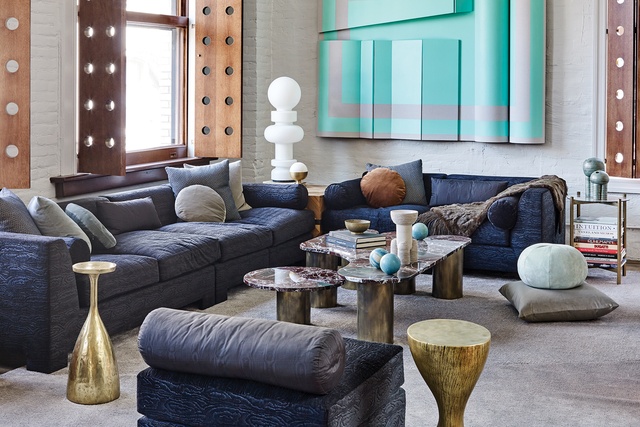
Which parts of the house design are really specific to the way you live?
GH: I’ve always loved the experience of getting dressed, getting into character. We really oriented this apartment around that. At its centre is a considerable amount of mirrored storage and a Vladimir Kagan chaise longue. It sets this scene where getting dressed can become a social and interactive part of the evening.
Do you feel like living with your work lets you see the products in a new light?
GH: t’s interesting – and super informative – to live with what we create. I get to experience the work in all different lights, moods and situations. I feel like I get a new understanding of it, which often leads me to the next thing, the next collection.
How do you separate your business and personal lives?
GH: I think it’s about creating a balance more than a separation. When you live for what you do – as we do – it’s impossible to separate yourself from your work. But, it’s entirely possible to create boundaries around time and to make sure that we take care of ourselves and each other in this process. So, often people talk about work life dominating and running into their personal sphere and we are in no way completely free of that. I do, however, think we have spent a lot of time developing the life we want to live, the places that takes us and the people that factor into it. More and more, there is an alignment and intersection of these things that feels natural and warm.
You’ve just secured New Zealand distribution through ECC. How do you think your products will be perceived in the Kiwi market?
GH: We feel like New Zealanders have a great sense of design and a great eye for contemporary work. Everyone we’ve talked to really gets what we are doing. We’re excited to see where they take the work.
See a tour of Hendifar and Anderson’s New York home here. Apparatus Studio is available in New Zealand through ecc.co.nz.


